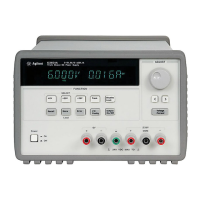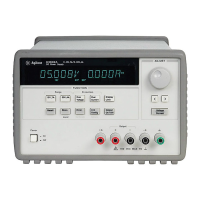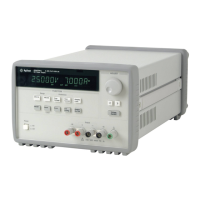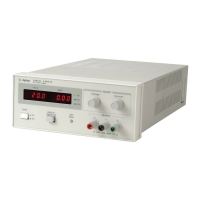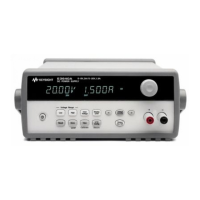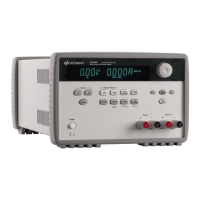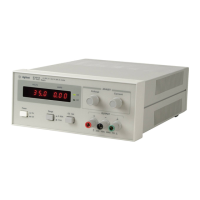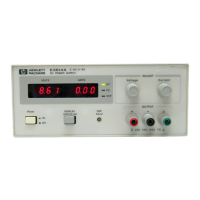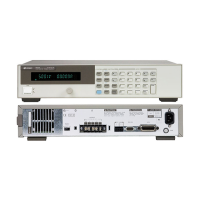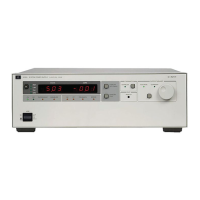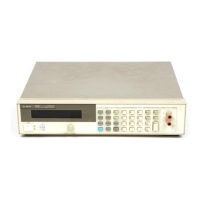Chapter 2 Initial Operation
Power-On Checkout
16
Power-On Checkout
The power-on test includes an automatic self-test that checks the internal
microprocessors and allows the user visually to check the display. You will observe
the following sequence on the display after pressing the front panel power switch to
on.
1 The front-panel display will light up briefly while the instrument performs its
power-on self-test.
To review the power-on display with all annunciators turned on, hold down
key as you turn on the power supply.
2 The GPIB address or RS-232 is also displayed for about one second.
The GPIB address is set to ‘‘5’’ when the power supply is shipped from the factory
for remote interface configuration. If this is not the first time the power supply is
turned on, a different interface (RS-232) or a different GPIB address may appear.
See "Remote Interface Configuration" in chapter 3 starting on page 58 if you need to
change the remote interface configuration.
3The “8V”* or “25V”**, “OVP”, “OCP” and “OFF” annunciators are on. All
others are off.
The power supply will go into the power-on / reset state; the output is disabled (the
OFF annunciator turns on); the 8/20A* or 25V/7A** range is selected (the 8V* or
25V** annunciator turns on); and the knob is selected for voltage control. Notice that
the
OVP and OCP annunciator also turn on.
4 Enable the outputs.
The OFF annunciator turns off and the 8V* or 25V**, OVP, OCP, and CV annunciators
are lit. The blinking digit can be adjusted by turning the knob. Notice that the display
is in the meter mode. ‘‘Meter mode’’ means that the display shows the actual output
voltage and current.
Note If the power supply detects an error during power-on self-test, the ERROR
annunciator will turn on.
See "Error Messages" for more information starting on page
123 in chapter 5
ADDR 05 (or RS-232)
*For Agilent E3633A Model **For Agilent E3634A Model
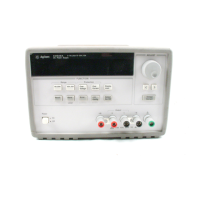
